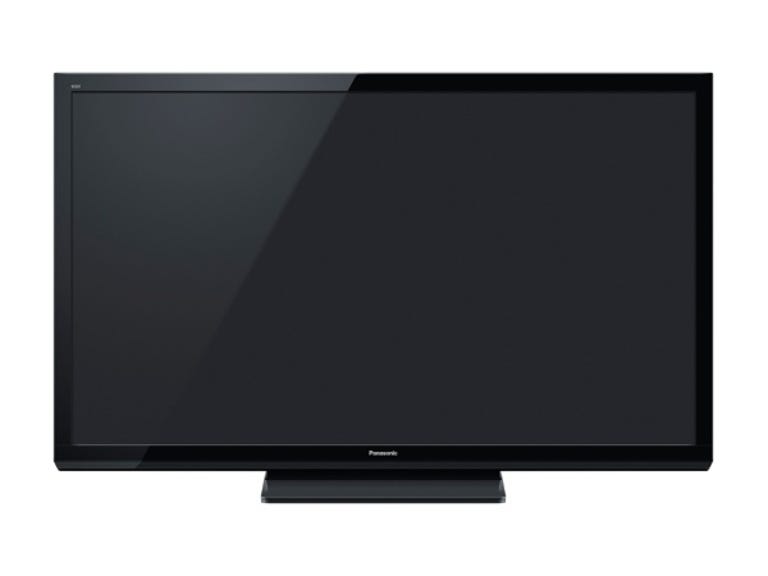 Why You Can Trust CNET
Why You Can Trust CNET Panasonic TX-P50X50B review: Panasonic TX-P50X50B
It's not great for bright rooms but the 50-inch Panasonic TX-P50X50B delivers great black levels, colours and motion for very little outlay.
This 50-incher offers a huge amount of screen real estate for a very low price as you can buy it online for just £480. Panasonic has had to make some significant cuts to its specification to get the price down to such a low level though.
The Good
The Bad
The Bottom Line
It's HD ready rather than a Full HD resolution, it lacks Internet TV features and it doesn't have the Infinite Black Pro filter found on Panasonic's pricier plasmas. What's surprising is that despite these compromises, the TX-P50X50B remains a very likeable TV for the money.
User interface and EPG
The X50 has the same user interface as that found on all of Panasonic's other current plasmas TVs. On the higher-end models the static, dull menus look out of place, but on a budget TV like this one, it's not such a big deal. The menus are still pretty boring to look at, but they're logically laid out and easy to understand, so you can get to the settings you need to tweak pretty quickly.
Unlike the higher end models, there's no Expert Calibration mode, so when it comes to picture tweaking, you only get access to the standard colour, contrast, brightness and sharpness controls. Nevertheless, because the picture presets are actually pretty good out of the box, most users probably won't bother tweaking them.

The electronic programme guide (EPG) is relatively weak on this TV though. Panasonic may have ditched the web-style adverts that took up space on last year's models, but the EPG still looks quite ugly. It lacks basic stuff like a video thumbnail window to keep track of the programme you're watching while browsing through the guide. You can switch between three layouts for the EPG via the main settings menu, but none of them are particularly inspiring.
At least it's reasonably quick to jump around on the EPG's timeline or just page up and down through the channels. The EPG also makes it relatively easy to filter by genres so you can quickly see upcoming movies or sports broadcasts.
Design and connections
Given the low asking price, it's no surprise to find the X50 lacks some of the design flare of the higher-end models in Panasonic's range. It's also a fair bit fatter than the likes of the ST50 and GT50 and the bezel around the screen is relatively wide.
The glossy black finish isn't going to win any design awards, although it doesn't look overly cheap either. Another positive is the set feels every bit as solid as other Panasonic plasmas I've had in for review, thanks in part to the metal cover on the back. It's worth noting, though, that the pedestal stand is fixed, so you can't swivel the TV -- you have to physically lift it to move it, stand and all.
As with Panasonic's UT50 budget 3D plasmas I reviewed recently, the company has also limited the range of connections on offer on the X50. The biggest issue is the measly two HDMI ports, so if you've hooked up a console like the PlayStation 3 and an HD TV set-top box from Sky or Virgin Media, you're not going to have any spare HDMI ports for anything else.
There's a full-sized Scart socket and component video inputs, but the TV lacks the VGA port you'd find on most plasmas. All of these ports are mounted on the rear and as they stick out the back, it might make the TV a little tricky to mount on a wall. It has a USB port and an SD card slot on the left-hand side and there's an Ethernet port too, although it's a tad under-used, as I'll explain below.
Video file playback
I was surprised to find an Ethernet port on the rear of the TV, and although I knew this set hadn't got any Internet TV features, I was hoping it might have DLNA functionality for playing digital media files across a network from a PC. Unfortunately, that's not the case and it turns out the Ethernet port is mostly present because the TV has a Freeview HD tuner -- all Freeview HD TVs have to have an Ethernet port onboard to meet the minimum specification, as dictated by Freeview. That said, the TV can use the Ethernet port to download firmware updates, but that's not likely to happen all that often. And nor is it very exciting.
What's more interesting is the TV's on-board media player. You can dump your video, music and image files on USB drives or SD cards and play them back on the set. For pictures, only JPEG files are supported, while for music it works with MP3, WMA and AAC tracks. Panasonic says it supports a range of formats for video including DivX, MP4 and MKV, but it's fussy about the files it will play. Three of the five MKV files I tried on the set refused to run. That said, playback quality on those that worked was very good.
Audio quality
Flatscreen TVs aren't exactly noted for their impressive sound quality, but Panasonic's plasma screens have generally been better than most when it comes to pumping out the sonics. Thankfully, the X50 does nothing to harm the company's strong reputation in this area.
The TV lacks the extra mini-subwoofer that's mounted on the rear of the company's more expensive plasmas. Despite this, and the fact the set's stereo speakers are rated at just 10W each, it produces pretty decent overall sound quality. It's not as bass heavy as the high-end models, but it doesn't embarrass itself with movie soundtracks or music, while speech and dialogue cuts through the mix cleanly. In fact, I've heard many TVs costing three times as much that sound far worse than this one.
Picture quality
For a sub-£500 TV of this size, the X50's picture performance is in many ways remarkable. Used in the evening in a dimly lit room, it exhibits really excellent black levels that blow the huge majority of budget TVs out of the water. The deep blacks also help with contrast performance. The set does an excellent job of teasing out shadow detail in darker scenes. Colours also tend to look very warm and natural, and although they lack a touch of the vibrancy of those on Panasonic's ST50 TVs, they're still remarkably refined and controlled.
Motion performance is also miles better than similarly priced budget LED sets, so it's a much more attractive option for watching footie or F1 than a cheap LED model.
There are a few negatives. For starters, while a 1080p resolution is now pretty standard across the huge majority of TVs I review, the X50 is more old school in that its native resolution is just 1,024x768 pixels, which means it's HD ready rather than Full HD.
If you're just stepping up to a HD TV, you probably won't really notice the difference, as HD material is about two and a half times as sharp as a standard-definition TV. However, if you're used to watching HD TV on a 1080p resolution set, the large 50-inch screen size of the X50 means will show up a slight lack of sharpness a Full HD would offer. You'll pick up on a few jagged edges due to the downscaling of HD content to fit the screen's native resolution too.
Also, this TV doesn't have the Infinite Black Pro Filter found on the company's ST50 and GT50 displays, which would help cut down on reflections and improve apparent black levels in bright rooms. If the TV is sitting near a window with sunlight streaming through, you'll struggle with a lot of reflections from the glass surface and the bright sunlight will also make the screen look slightly washed out. So this TV isn't equally at home being used by the kids during the day to watch cartoons and for movie watching in the evening. It excels at the later, but it's a poor choice for the former.
Conclusion
The TX-P50X50B is certainly not a TV for everyone, as it's not ideal for use in brighter rooms. However, those who can live with this failing will be rewarded with deeper black levels, more natural colours and smoother motion than you'll find on any other similarly priced budget TV of this size.


